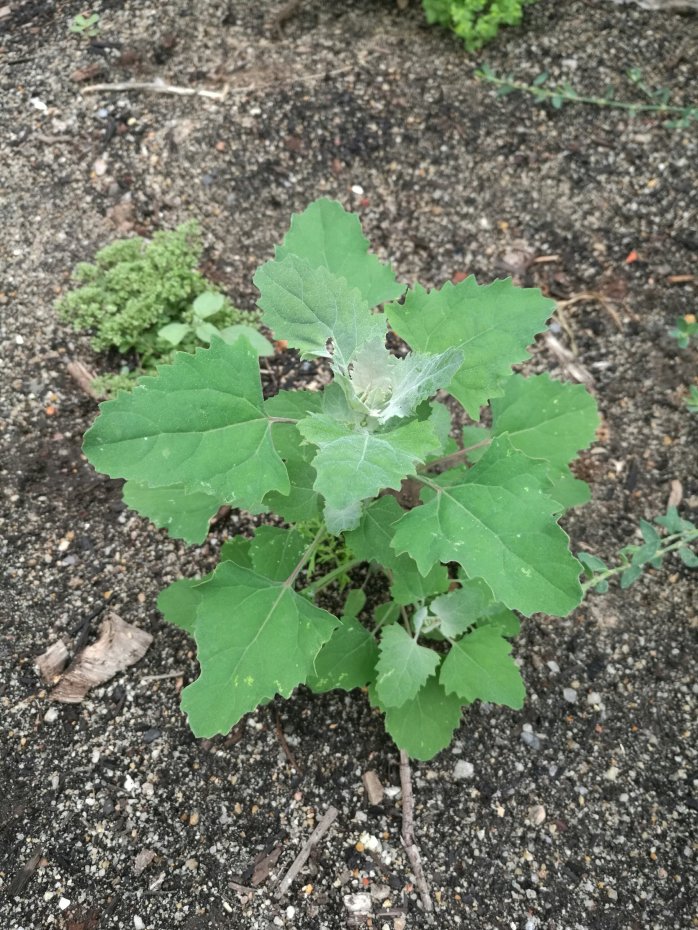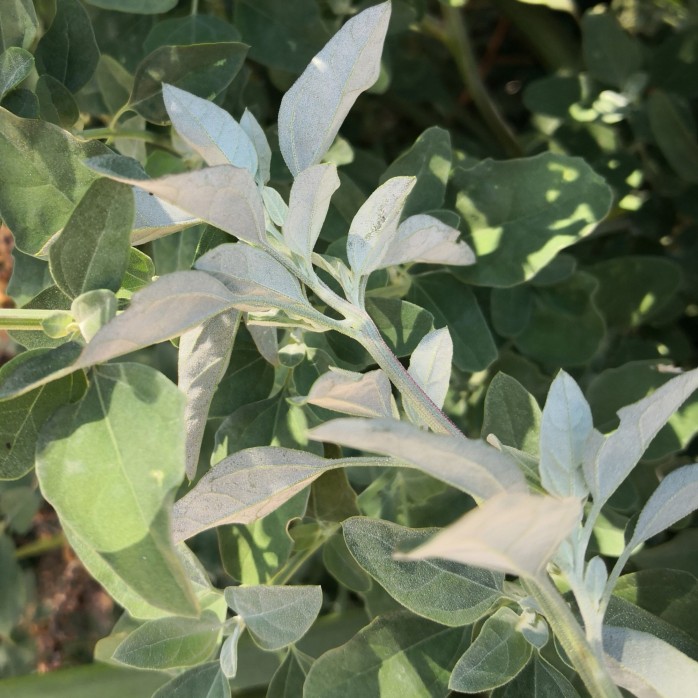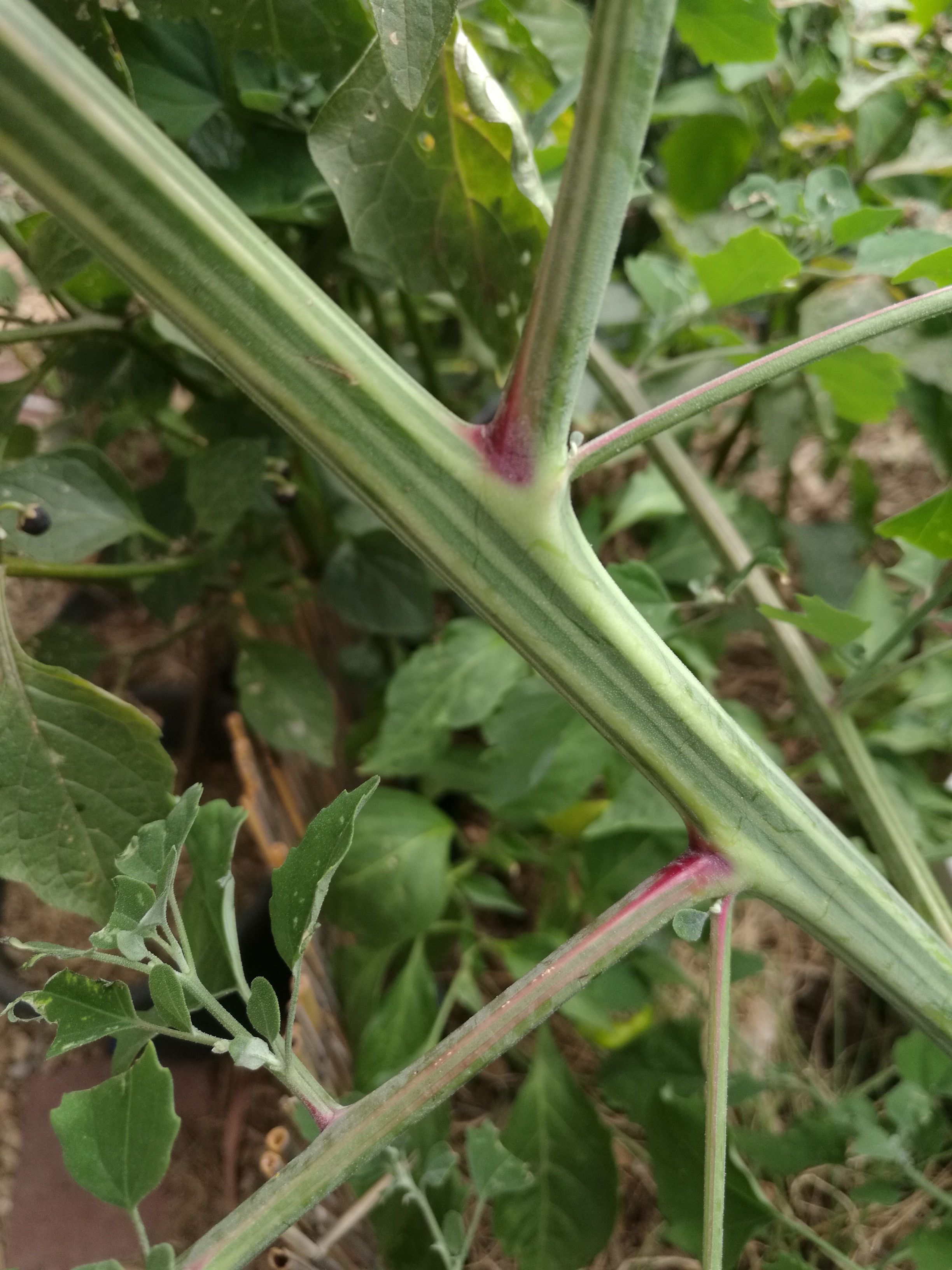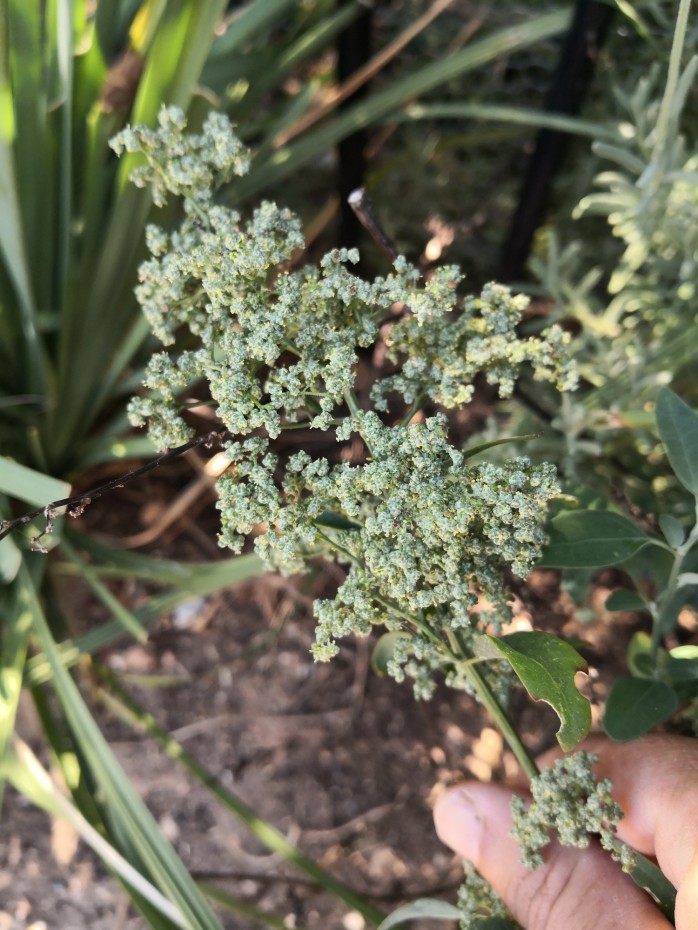

Common names: Goosefoot, Lamb’s Quarters, Fat Hen,
Taxonomic name: Chenopodium album
Family: Amaranthaceae
Uses: food
Area of origin: Europe
Warnings: none
We ignore this plant of many names – Goosefoot, or Fat Hen or Lamb’s Quarters (Chenopodium album) – as we walk along, yet it contains more goodies than its close relative, Spinach (Spinacia oleracea). It is related to Green Amaranth, also covered on this website.
Goosefoot is notable for its levels of calcium, iron, protein, vitamins B1, B2, and C, all of which it contains more than your usual Spinach or Cabbage.
Goosefoot can be easily identified by the characteristic shape of its leaves, which have a shape similar to that of a goose’s foot or the print it leaves behind in the mud. The second identifying feature is the white, powdery coating that covers the leaves. This gives rise to its species name, album.
As you can see in the pics below, the leaves are a whiter shade on the underside and the stems are angular and striped reddish colours.


An angled, striped stem.
Another feature that it has in common with many others in the Amaranth family is a striped, angular stem The amount of striping and angularity can vary enormously between specimens.
As with other Amaranths too, Goosefoot produces quite a lot of edible seeds that can be cooked along with the leaves. When you pick the seeds, pick the while stem with the ripe or nearly ripe seeds and hang it over a cloth or sheet of paper. As it dries, give it an occasional shake to dislodge and collect the tiny seeds.
Just one note. Goosefoot suffers from ‘shrinkage’. You might think that you’ve picked enough for a complete meal, only to find that when it’s cooked, its only a couple if mouthfuls!

Back in the Summer of 2016, I dug up a Goosefoot plant from the footpath and planted it in the middle of one of our garden beds. Around it I planted more traditional vegetables and herbs, then neglected the bed, giving only a sprinkling on the hottest days. The Goosefoot thrived while the only the Parsley survived to keep it company.
Says a lot, doesn’t it? I’ve grown it as well as Spinach for the last couple of years.
Description –
Goosefoot grows to around thigh high. It’s broad, lobed, leaves are lighter on the underside and can have a dusting of silver on the top. This dusting can be very light or almost completely cover the leaves. Stems are angular and can be tinged with red. Flowers are green and grow on spikes held above the leaves. Prolific seeds grow after these.
